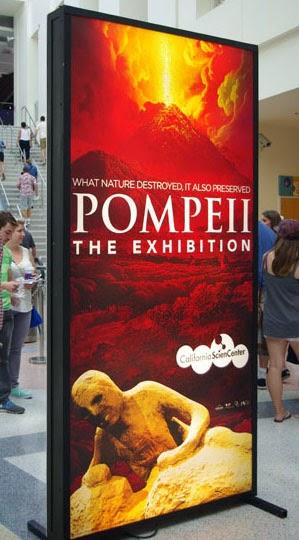
Two thousand years ago, Pompeii was a bustling seaside Roman town, not far from the modern city of Naples, Italy. It lay at the foot of Mount Vesuvius, an active volcano. Then on one fateful day in 79 A.D., the volcano erupted with a massive explosion, engulfing the town with toxic cases and deadly pyroclastic blasts. Within hours, Pompeii and nearly everything and everyone in it became buried in a twenty foot deep layer of ash.
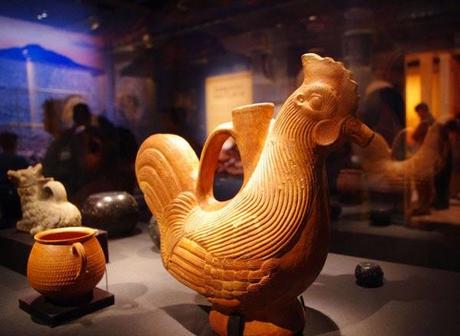
Pottery
Because of the lack of air and moisture, the objects that lay underneath the ash were so well preserved that when they are excavated they seem almost new. Rediscovered 250 years ago, the remains of Pompeii provide an extraordinarily detailed insight into the life in the ancient Roman empire.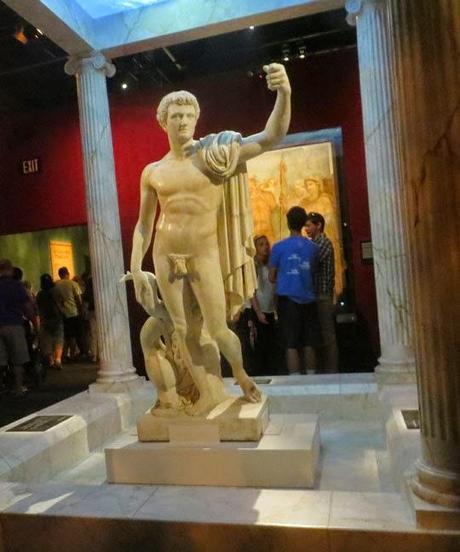
Imperial Portrait, Marble
I have never been to Pompeii to see it in person, but I recently went with my family to see Pompeii: the Exhibition at the California Science Center in Exposition Park in Los Angeles. (The exhibit, which is traveling to various sites in the U.S., is now in Seattle, Washington at the Pacific Science Center.) Pompeii: The Exhibition features over 150 precious artifacts on loan from the Naples National Archaeological Museum. It is the next best thing to getting on a plane and flying to Italy.
As we entered the exhibit, we each received a wand so that we could move through at our own pace and listen to the narration at numbered stations. The exhibit is organized around objects that would have been part of daily and civic life in ancient Roman times. Displays range from statues, coins and helmets to jewelry, household pots and furniture.
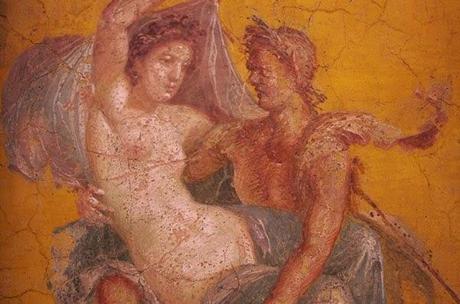
Fresco
Walls were lined with beautiful frescoes and mosaics. Statues that would have decorated the homes of wealthier citizens stood in niches and small courtyards. One of the most successful inhabitants of Pompeii was Aulus Umbricius Scaurus, a manufacturer of garum, a sauce made from fermented fish. Garum was an essential ingredient in ancient Roman cuisine. Made by crushing the intestines of fresh tuna and moray eels in salt, it added a sharp, salty taste to otherwise bland dishes.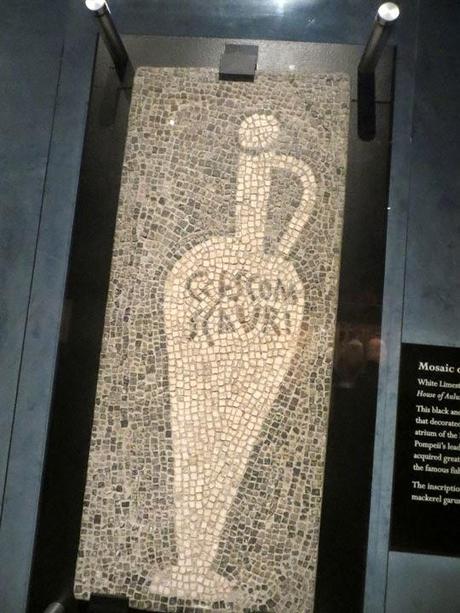
Mosaic of a Garum Amphora from the house of Aulus Umbricius Scaurus
Apparently, Pompeii is well-known for its erotic art. The exhibit is designed so that families with children can bypass the room with those displays. Since we had three children we took the bypass and went directly to the room with the plaster casts of people who had died at Pompeii.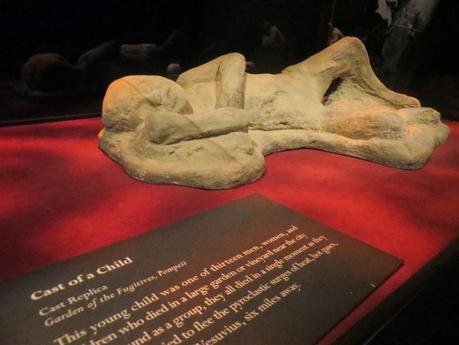
Plaster cast of a child
During the excavation of Pompeii, plaster was used to fill in the spaces between the ash layers that once held human bodies. This allows one to see the exact position the person was in when he or she died. The exhibit includes the body of a young child who was one of thirteen men, women, and children who died in a large garden or vineyard near the city wall. They all died in a single moment as they apparently tried to flee the pyroclastic surges of heat, hot gases, rock, and ash of Vesuvius, six miles away.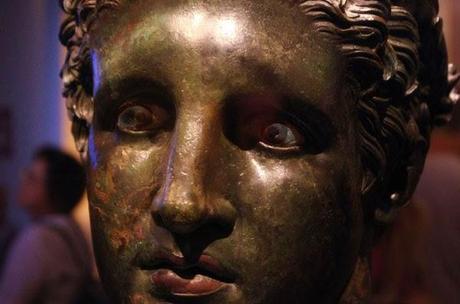
Bronze head
As we waited for the doors to open into the body room, the lights dimmed, the floor rumbled and we had a vicarious experience of the volcanic eruption. It is hard to imagine the horror of that day for the people of Pompeii. Their buried remains, the buildings they lived in, and their personal effects provide us with a window onto the richness of the life they once led. For more on the history of Pompeii, click HERE.I thank my son-in-law Humberto Gutierrez Rivas for his contribution of excellent photos for this post.
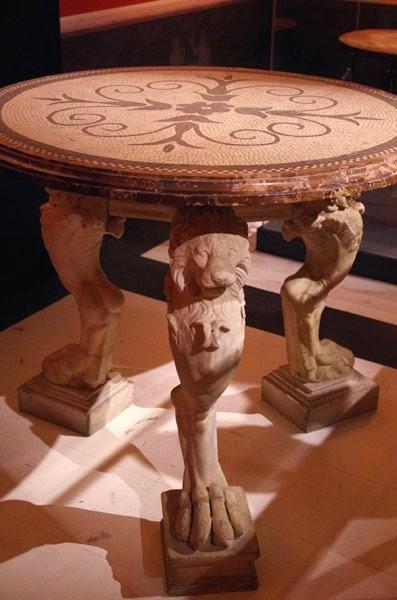
Mosaic table with lion foot legs from Pompeii
Note: If you are in Los Angeles and have a chance to visit the Getty Villa in Pacific Palisades, you will see how an ancient Roman house looked at the time. The Getty Villa and its beautiful gardens are modeled after a first-century Roman country house, the Villa de Papiri, at Herculaneum. Herculaneum was smaller town near Pompeii that was also destroyed by the eruption of Vesuvius in 79 A.D. The Getty Villa is home to the J. Paul Getty Antiquities collection.The Getty Villa is modeled after a first-century Roman country house, the Villa dei Papiri in Herculaneum, Italy.
The building was constructed in the early 1970s by architects who worked closely with J. Paul Getty to develop the interior and exterior details.
- See more at: http://www.getty.edu/visit/villa/architecture.html#sthash.ivnZbmPz.dpufThe Getty Villa is modeled after a first-century Roman country house, the Villa dei Papiri in Herculaneum, Italy.
The building was constructed in the early 1970s by architects who worked closely with J. Paul Getty to develop the interior and exterior details.
- See more at: http://www.getty.edu/visit/villa/architecture.html#sthash.ivnZbmPz.dpufThe Getty Villa is modeled after a first-century Roman country house, the Villa dei Papiri in Herculaneum, Italy.
The building was constructed in the early 1970s by architects who worked closely with J. Paul Getty to develop the interior and exterior details.
- See more at: http://www.getty.edu/visit/villa/architecture.html#sthash.ivnZbmPz.dpuf
